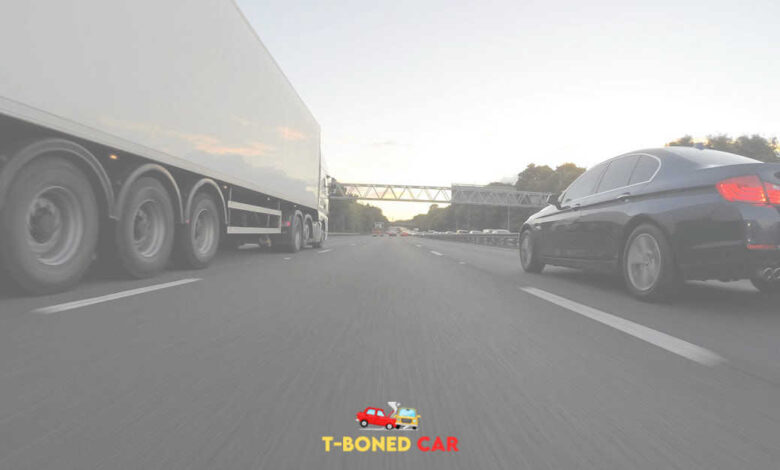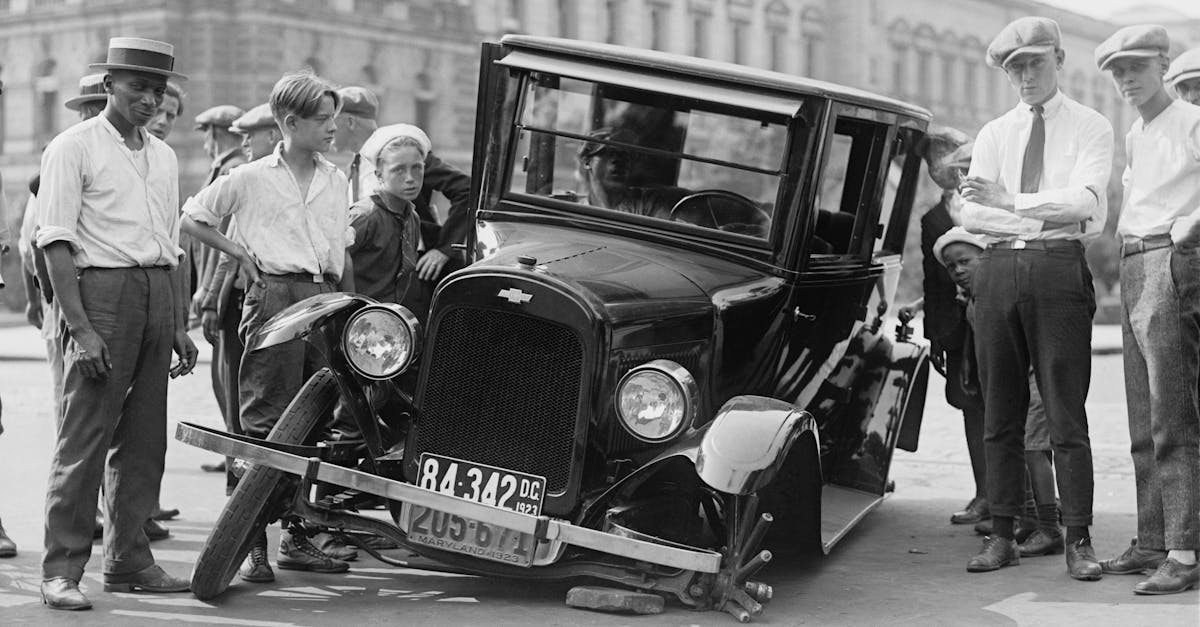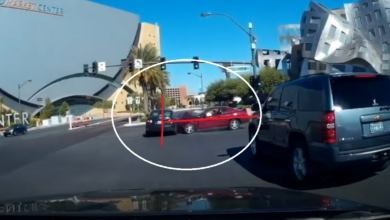Essential Tips for T-Bone Car Insurance Claims

When you find yourself in a T-bone accident, dealing with the aftermath can feel overwhelming. Understanding how to navigate the T-bone Car Insurance claims process is essential for ensuring you receive the compensation you deserve. This type of crash, where one vehicle strikes the side of another, can lead to severe injuries and considerable damages. Therefore, it’s crucial to be prepared and know what steps to take. Whether you are a seasoned driver or new to the road, familiarizing yourself with the specific T-bone Car Insurance coverage options and the best ways to approach your claim can make a significant difference. Getting it right from the start will not only help in managing stress but also speed up the compensation process.
Main Points
The main points to consider when filing a T-bone Car Insurance claim include understanding your coverage options and the claims process. First, take immediate action after an accident, ensuring safety and documenting the scene. Next, gather relevant evidence, including photos and witness statements, to back up your claim. Additionally, familiarize yourself with the T-bone Car Insurance providers to find the best policy, and be aware of potential costs involved. Lastly, keeping communication open with your insurer and following up consistently can expedite the resolution of your claim. Each step is vital in securing the compensation necessary to recover from the accident efficiently.

Understanding T-Bone Accidents: Causes and Consequences
T-bone accidents, often termed side-impact collisions, pose significant risks on the road. These incidents typically occur when one vehicle strikes another directly at its side, often resulting in severe injuries. The primary causes include distracted driving, speeding, and failure to yield at intersections. Such factors may lead to confusion among drivers, particularly in complex traffic environments. Victims of T-bone accidents often face medical, financial, and emotional repercussions. Understanding the context of these accidents is crucial for awareness and prevention. To mitigate costs, drivers should seek T bone Car Insurance quotes, ensuring the right coverage fits their needs. Affordable T bone Car Insurance is available, providing essential protection in the event of such unfortunate incidents. Various coverage options ensure that victims receive adequate compensation for their losses. Engaging in safe driving practices may significantly reduce the likelihood of experiencing these perilous situations.
2025: Preparing for Future Driving Challenges
Looking ahead to 2025, it is essential to comprehend emerging trends in road safety and accident reduction. Staying informed allows drivers to adapt strategies that promote safety. As vehicular technology advances, real-time updates about traffic patterns and AI-driven safety measures will likely play critical roles. This shift will impact how we approach insurance and risk management related to accidents, particularly T-bone scenarios, ensuring more comprehensive coverage options for all.

Step-by-Step Guide to Filing a T-Bone Car Insurance Claim
Filing a claim for a T bone Car Insurance accident can be daunting for many drivers, particularly if you’re new to the experience. Begin by gathering all pertinent information about the incident, including photos and witness statements. Subsequently, contact your insurance provider and report the accident. You’ll need to provide details about the collision and any injuries that may have occurred.
Next, familiarize yourself with your policy’s coverage limits. Understand that coverage can vary widely, especially for new drivers, so review your T bone Car Insurance policy closely. Once your claim is initiated, your insurer will likely conduct an investigation, communicating directly with you throughout the process. Keeping records of all correspondence is essential.
Choosing the Right Provider
When comparing T bone Car Insurance providers, consider factors such as customer service ratings and claims processing times. Search for the best options available, ensuring they align with your specific needs, particularly if you are a new driver seeking affordable rates. In this intricate landscape, make informed decisions that best serve your unique situation.
Common Mistakes to Avoid When Making a T-Bone Accident Claim
When filing a T-bone car insurance claim, it’s essential to avoid common pitfalls that could jeopardize your compensation. Many claimants neglect to gather adequate evidence after the accident. Take photos of the scene, witness statements, and any relevant police reports. This documentation can be crucial for establishing liability.
Another frequent mistake is underestimating the importance of timelines. Many individuals fail to report the incident promptly or submit necessary documentation late, resulting in delays or denials. It’s also vital to avoid discussing fault or making unguarded statements at the scene, as these can be misinterpreted later.
Relying solely on the insurance company’s assessment can lead to insufficient compensation. Instead, consider consulting with a legal professional to navigate the complexities of your T-bone car insurance claim effectively. Understanding your rights and the claims process will significantly improve your chances of a favorable outcome.
By steering clear of these errors, you can enhance your claim’s success and ensure you receive the compensation you deserve.
How to Gather Evidence for Your T-Bone Insurance Claim
Filing a claim for a T-bone accident can often feel overwhelming. Gathering essential evidence is crucial to support your T-bone car insurance claim effectively. Start by documenting the scene thoroughly. This includes taking photographs of vehicle damages, positions of the cars involved, and any relevant road signs or signals.
Next, collect eyewitness statements. These accounts can provide additional perspectives on how the accident occurred, which is vital for insurance purposes. Be sure to write down their contact information for further follow-up.
Additionally, obtaining a police report is instrumental. This official document often serves as a foundation for your claim and validates your version of events. Finally, keep all medical records and repair estimates organized. Together, these elements build a robust case for your T-bone car insurance claim.
- Document the scene: Capture photos and notes on the accident site.
- Gather eyewitnesses: Collect contact details and statements.
- Secure a police report: Ensure it’s detailed and accurate.
- Organize medical records: Keep all relevant documentation in one place.
The Role of Insurance Adjusters in T-Bone Car Accidents
In the aftermath of a T-bone car accident, the role of insurance adjusters becomes paramount. These professionals are tasked with assessing the damages and determining the compensation that victims rightfully deserve. Their evaluations can significantly influence the claims process, which is often laden with complexities. Insurance adjusters gather evidence, interview witnesses, and analyze police reports, all while under tighter deadlines than one might assume.
However, the process can confuse many accident victims. People often question how adjusters decide the value of injuries or damages. What criteria do they rely on? In fact, the adjuster’s interpretation of the incident can vary widely, sometimes leading to disputes. They must remain objective, yet their findings may feel biased to those involved. Ultimately, clear communication is crucial to navigating the claims process effectively. Understanding the adjuster’s role can empower victims in seeking fair outcomes after a T-bone car accident.
Conclusion
The insight of an insurance adjuster is essential when facing the repercussions of a T-bone car accident. Being informed can make a difference in the outcome of your claim.
Legal Considerations When Involved in a T-Bone Collision
Experiencing a T-bone collision can be shocking and confusing. However, understanding the T-bone car insurance framework and your legal rights is crucial. In such accidents, liability often hinges on traffic laws and right-of-way rules, which can become convoluted. For instance, if one driver was unaware of a stop sign, the negligence may fall entirely on them.
Determining Fault
Investigating the accident scene is essential. Eyewitness accounts and traffic camera footage can provide vital evidence. However, don’t overlook the role of police reports; they often carry significant weight in legal discussions.
“Accidents are often the clearest glimpse of chaos, challenging established norms of accountability.”
Insurance Implications
Your T-bone car insurance coverage can significantly influence the outcome of claims. Be sure to report the incident promptly, as delays can complicate the claims process. Remember, the distinction between comprehensive and collision coverage can profoundly affect your financial recovery after an accident.
| Action | Importance |
|---|---|
| Document Scene | Helps establish fault |
| Gather Witness Info | Strengthens your case |
Ultimately, engaging with legal experts may help to navigate the intricate landscape following a T-bone collision. The road to recovery can be complex, but informed decisions pave the way forward.
Tips for Negotiating with Insurance Companies After a T-Bone Accident
Negotiating with insurance companies after a T bone car insurance accident can be an overwhelming experience. Understanding the process is essential. Here are some tips to help guide you through these challenging discussions.
- Document Everything: Keep detailed records of all communications with the insurance company. This can be crucial for your case.
- Know Your Rights: Familiarize yourself with your local laws concerning insurance claims, as this can empower your negotiation.
- Stay Calm and Professional: Emotional responses can hinder negotiations. Maintain a calm demeanor to foster a cooperative atmosphere.
- Have a Clear Settlement Amount in Mind: Before engaging in discussions, determine a reasonable settlement range based on your losses.
- Be Prepared to Walk Away: If the initial offer doesn’t meet your needs, be ready to negotiate firmly or consider pursuing further action.
By following these strategies, you will enhance your chances of achieving a favorable outcome for your T bone car insurance claim. Remember, preparation can make all the difference.
What to Expect During the T-Bone Claim Process
When navigating through the T-Bone claim process, you may encounter various stages that can feel overwhelming at times. Initially, gather all necessary documentation, which includes accident reports, witness statements, and any relevant photos. This foundational step ensures your claim is substantiated and ready for submission.
Upon filing your claim with the insurance company, expect to engage in detailed discussions about the accident. They will assess the extent of damages, which can be a particularly intricate process. You might need to attend a medical examination, especially if injuries are present; this step should not be overlooked.
Throughout the process, staying organized is crucial. For instance, maintaining a timeline of events can aid clarity in your case. Remember, some claims may take longer than anticipated—patience is key. Finally, don’t hesitate to consult a professional if any confusion arises. Their expertise in T-bone car insurance can significantly ease your journey.
Maximizing Your Settlement: Evaluating Damages After a T-Bone Accident
After experiencing a T-Bone accident, evaluating damages is crucial for maximizing your settlement. Often, individuals overlook the extensive implications of such incidents. This type of collision can lead not only to physical injuries but also to emotional and financial strains. It’s important to categorize your losses into direct medical expenses, lost wages, and pain and suffering.
Assessing Medical Costs
Your medical expenses will likely form a significant portion of your claim. Documenting T-bone car insurance expenses can help ensure that all costs are considered. Additionally, consider future medical needs that may arise as a result of your injuries. Evaluating lost wages requires careful consideration of your income and potential earning capacity.
Pain and Suffering
Pain and suffering damages represent a more complex calculation. Understanding the emotional toll is vital, yet many find quantifying this aspect perplexing. Thus, consulting with a legal expert can significantly assist in properly valuing these damages. Remember, a solid grasp of your overall losses will enable you to negotiate effectively, ensuring your T-bone car insurance settlement reflects the true extent of your experience.
Ultimately, thorough documentation and a comprehensive approach will empower you in securing a favorable outcome.
Conclusion
Navigating a T-Bone car insurance claim can be a challenging journey, but it doesn’t have to be overwhelming. Start by ensuring you gather all necessary information, from police reports to witness statements. This documentation not only helps your case but also speeds up the claims process. Additionally, don’t hesitate to communicate openly with your insurance adjuster; they’re there to help you understand your options. Remember, each accident is unique, and your approach may need to vary depending on the circumstances. Even if the road gets bumpy, staying organized and proactive will go a long way. Ultimately, these essential tips for T-Bone car insurance claims can empower you to seek the compensation you deserve. So, take a deep breath, and tackle the process one step at a time.
Frequently Asked Questions
What is T-bone car insurance?
T-bone car insurance typically refers to coverage for accidents where one vehicle strikes another at a right angle, commonly at intersections.
Does T-bone accident coverage include medical expenses?
Yes, most car insurance policies that cover T-bone accidents include medical expenses for injuries sustained in the accident, depending on the terms of the policy.
Are T-bone accidents covered under comprehensive insurance?
T-bone accidents are generally covered under collision insurance rather than comprehensive insurance, which covers non-collision-related incidents.
How can I prevent T-bone accidents?
You can prevent T-bone accidents by adhering to traffic signals, being aware of your surroundings, and avoiding distractions while driving.
What should I do if I’m involved in a T-bone accident?
If you’re involved in a T-bone accident, check for injuries, call emergency services, exchange information with the other driver, and document the scene for insurance purposes.
Will my insurance premium increase after a T-bone accident?
It’s possible that your insurance premium may increase after a T-bone accident, especially if you are found at fault.
Do I need to report a T-bone accident to my insurance company?
Yes, you should report a T-bone accident to your insurance company as soon as possible, regardless of fault.
What damages are typically covered in a T-bone accident?
Damages covered in a T-bone accident may include vehicle repairs, medical expenses, lost wages, and pain and suffering, depending on your insurance policy.
Can uninsured motorist coverage help with T-bone accidents?
Yes, uninsured motorist coverage can help cover costs in a T-bone accident if the other driver is at fault and does not have insurance.
How does fault determination work in T-bone accidents?
Fault in T-bone accidents is typically determined by examining traffic laws, eyewitness accounts, and police reports to see which driver failed to yield or obey traffic signals.

